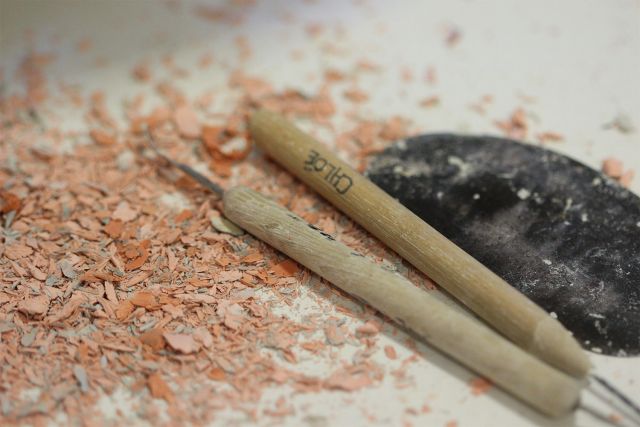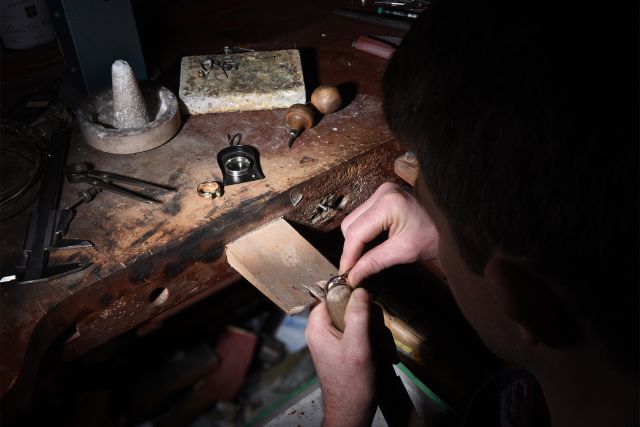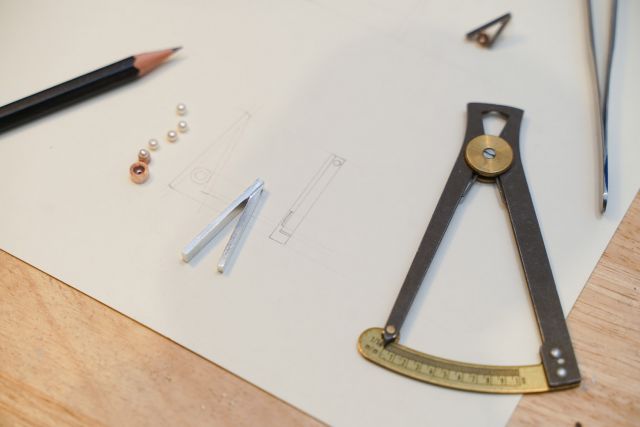This pendant is part of a collection entitled Ethnobotany, which is inspired by Emma’s research into the relationship between people and botany and the traditional uses of plants to heal individual organs. Emma made the pendant using the lampworking technique. By melting, flattening and pulling borosilicate glass on the torch, individual sections were created and then assembled when hot into a whole piece. The transparency of clear glass has been intentionally maintained to heighten the organic ecosystem within, while adding a little colour to some petals made each one unique.
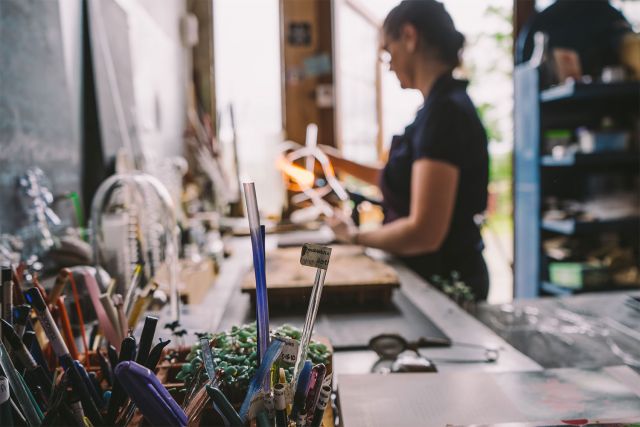
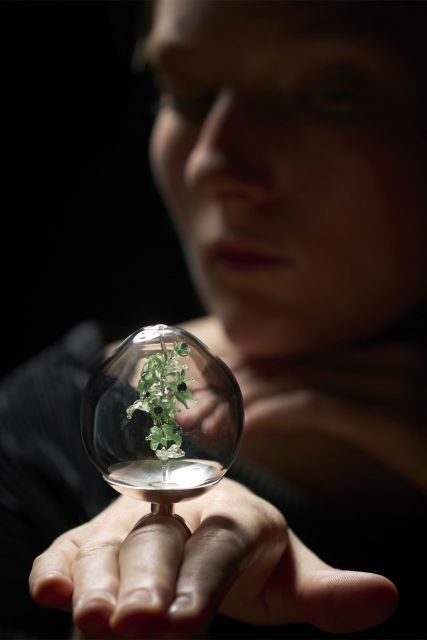
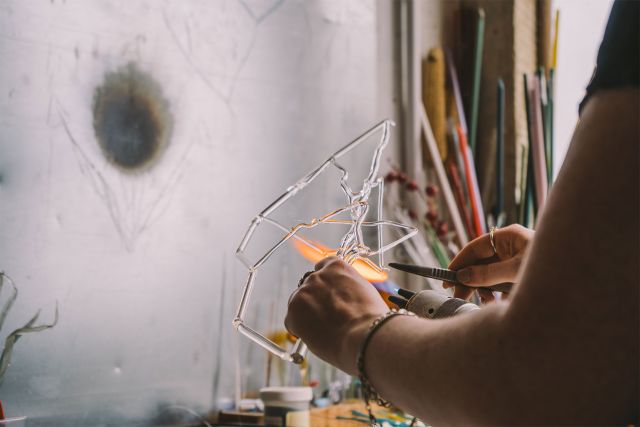
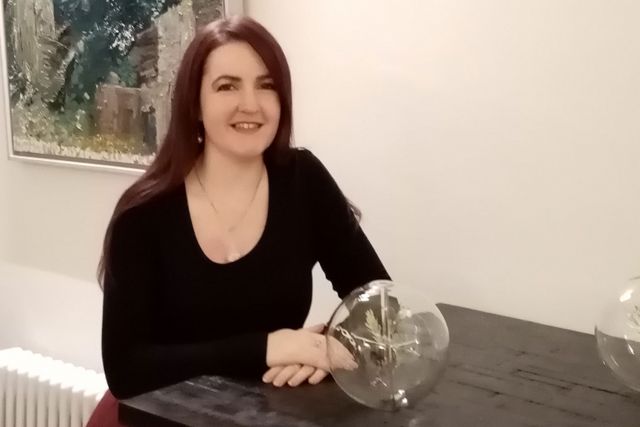
Emma Bourke
- Lampworker
- Westport, Ireland
- Master Artisan
By appointment only
+353 857514456
Connecting people and plants
- • Emma was the first from her college to graduate in lampworking
- • She is inspired by the medicinal uses of plants
- • One of her pieces is held in the National Museum of Ireland
Emma Bourke’s studio is a sea of tiny, colourful leaves, petals and other plant parts. While researching the famous glassmakers Leopold and Rudolf Blaschka, Emma discovered they built their scientific models in sections. This how she now works, painstakingly creating hundreds of miniature components before assembling them into a finished piece. To anyone else this might seem monotonous, but Emma cheerfully explains that working this way means she can tackle multiple projects at once. Her work speaks of folklore and cultural identity, exploring the concept of biophilia: the innate human tendency to seek connections with nature.
Read the full interviewWorks
Photo: © Sylvain Deleu

Photo: © Sylvain Deleu
This pendant is part of a collection entitled Ethnobotany, which is inspired by Emma’s research into the relationship between people and botany and the traditional uses of plants to heal individual organs. Emma made the pendant using the lampworking technique. By melting, flattening and pulling borosilicate glass on the torch, individual sections were created and then assembled when hot into a whole piece. The transparency of clear glass has been intentionally maintained to heighten the organic ecosystem within, while adding a little colour to some petals made each one unique.

Photo: © Sylvain Deleu
This pendant is part of a collection entitled Ethnobotany, which is inspired by Emma’s research into the relationship between people and botany and the traditional uses of plants to heal individual organs. Emma made the pendant using the lampworking technique. By melting, flattening and pulling borosilicate glass on the torch, individual sections were created and then assembled when hot into a whole piece. The transparency of clear glass has been intentionally maintained to heighten the organic ecosystem within, while adding a little colour to some petals made each one unique.

Photo: © Sylvain Deleu
This pendant is part of a collection entitled Ethnobotany, which is inspired by Emma’s research into the relationship between people and botany and the traditional uses of plants to heal individual organs. Emma made the pendant using the lampworking technique. By melting, flattening and pulling borosilicate glass on the torch, individual sections were created and then assembled when hot into a whole piece. The transparency of clear glass has been intentionally maintained to heighten the organic ecosystem within, while adding a little colour to some petals made each one unique.

Photo: © Sylvain Deleu
This pendant is part of a collection entitled Ethnobotany, which is inspired by Emma’s research into the relationship between people and botany and the traditional uses of plants to heal individual organs. Emma made the pendant using the lampworking technique. By melting, flattening and pulling borosilicate glass on the torch, individual sections were created and then assembled when hot into a whole piece. The transparency of clear glass has been intentionally maintained to heighten the organic ecosystem within, while adding a little colour to some petals made each one unique.






